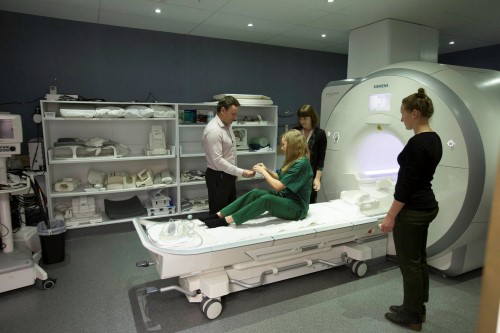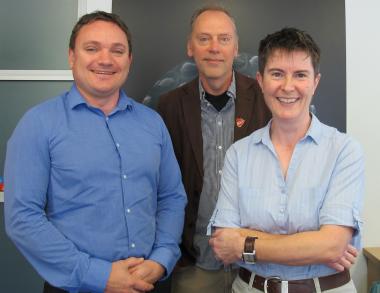Crunchy, creamy, crispy… do we eat less food if it has a complex texture?

Professor Bryony James, Associate Professor Michael Hautus and Dr Nicholas Gant from the University of Auckland will study how food texture relates to our sense of feeling full. This project will help in planning dietary strategies to combat obesity
Published 2 November 2017

The team is, from left to right, Dr Nick Gant, Associate Professor Michael Huatus and Professor Bryony James
There are many factors contributing to the current obesity epidemic. One part of the puzzle is why people continue to eat, or eat between meals, when they are full.
Feeling full can be heightened by spending more time and effort on chewing food. However, recently it has also been shown that the sense of feeling full can be accelerated by food texture, in particular, complex textures. Complex textures might be a combination of many sensations, such as crunchy, creamy, and crispy like a Ferrero Rocher chocolate.
Alternatively, they may be just a few textures sensed with high intensity, like a tooth-breakingly-hard gingernut biscuit. However, the mechanisms that connect textural complexity with the feeling of fullness are not well understood.
Professor Bryony James, Associate Professor Michael Hautus and Dr Nicholas Gant, all from the University of Auckland, have received a Marsden Fund grant to address this important knowledge gap. They aim to determine if the increased effort required to chew texturally complex foods results in a cascade of sensory inputs to the brain, stimulating signals to the gut.
Their study will use an interdisciplinary approach, using functional MRI to directly investigate the response of the human brain to different food textures, and to link these neural responses to food material properties and to perceptions of texture.
This hallmark study will directly connect the responses of our mouth, brain and gut to the physical properties of the food we eat. Ultimately, the research will contribute to a better understanding of appetite and eating, and enable better insight into how to combat the rising obesity epidemic.
